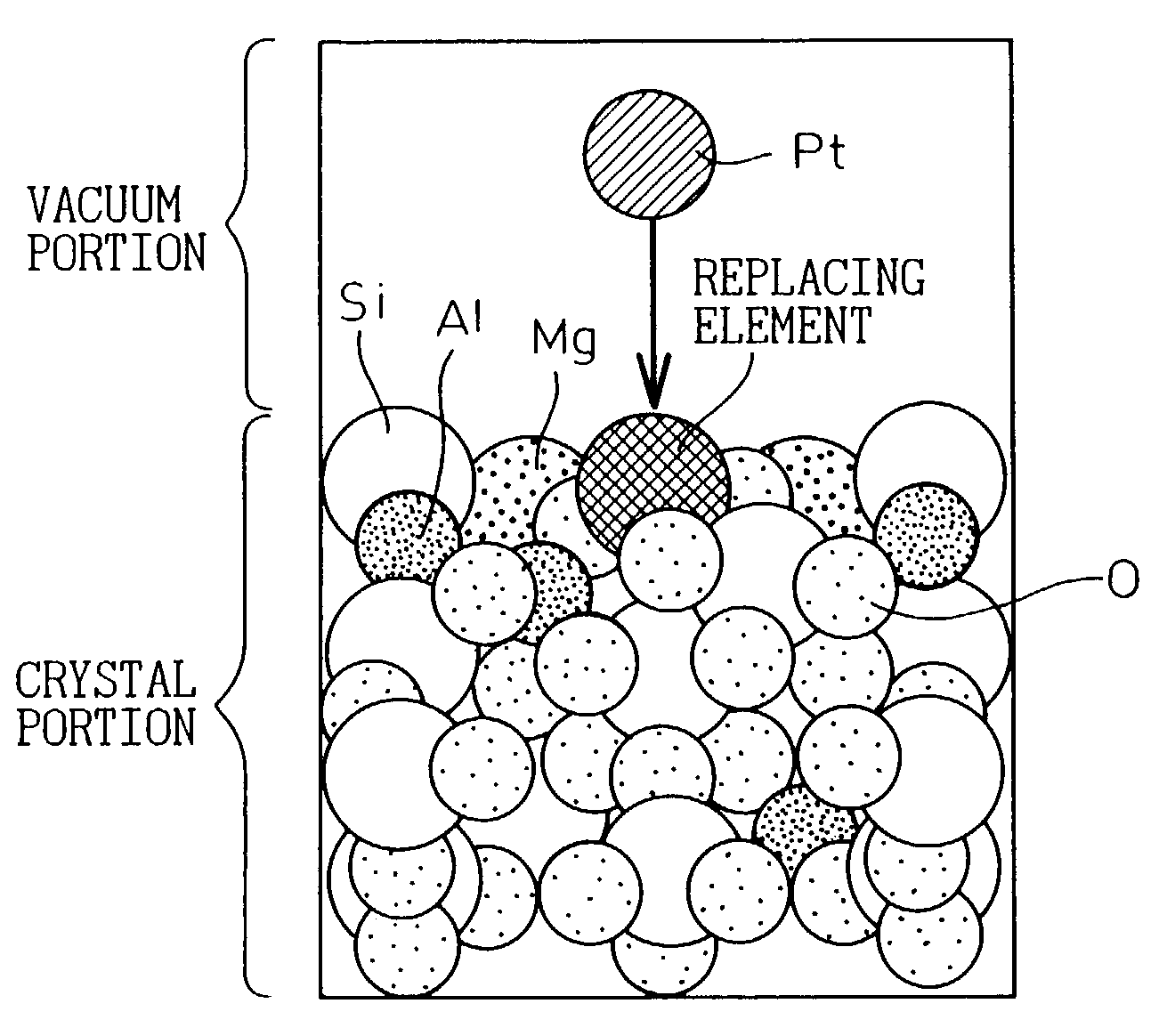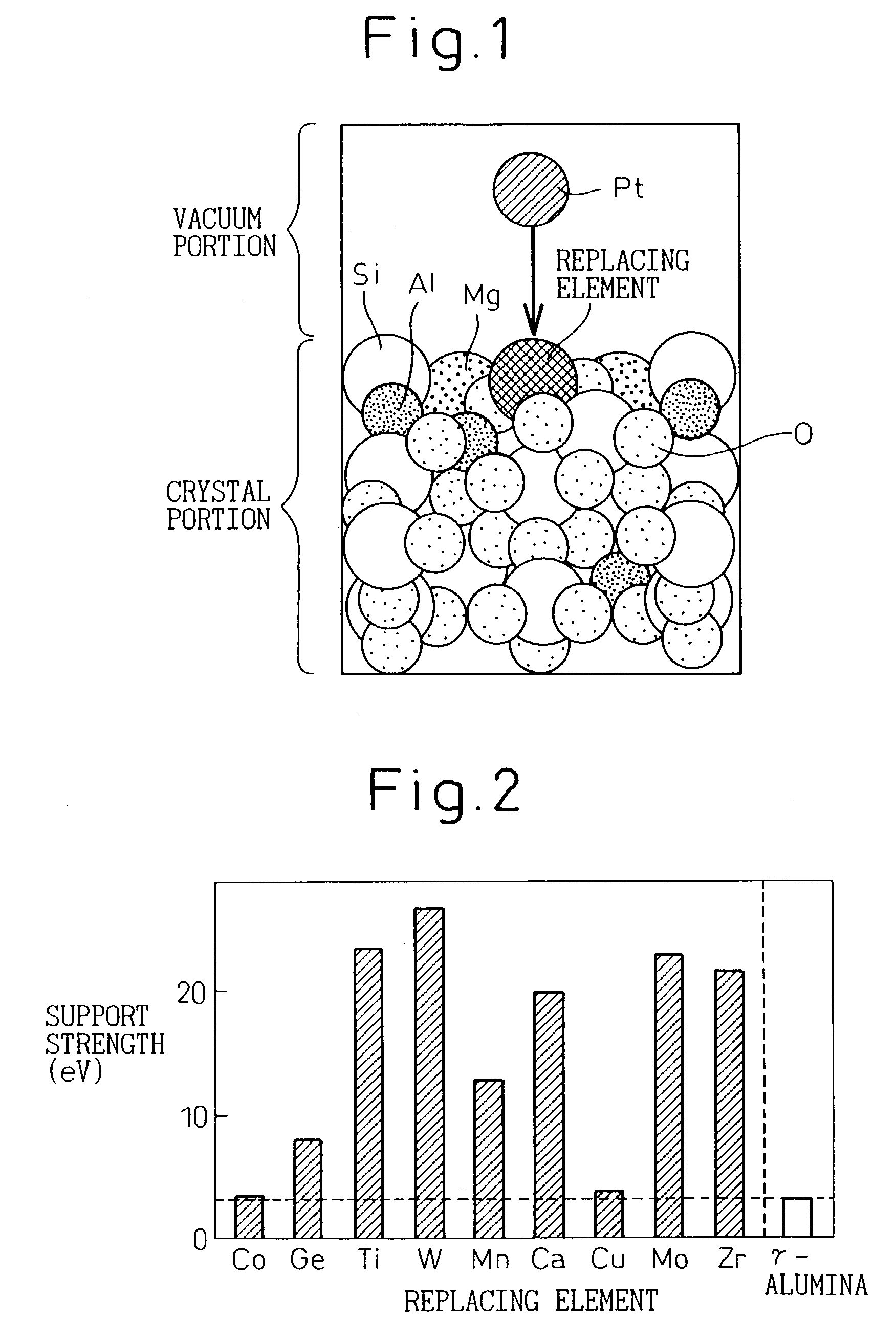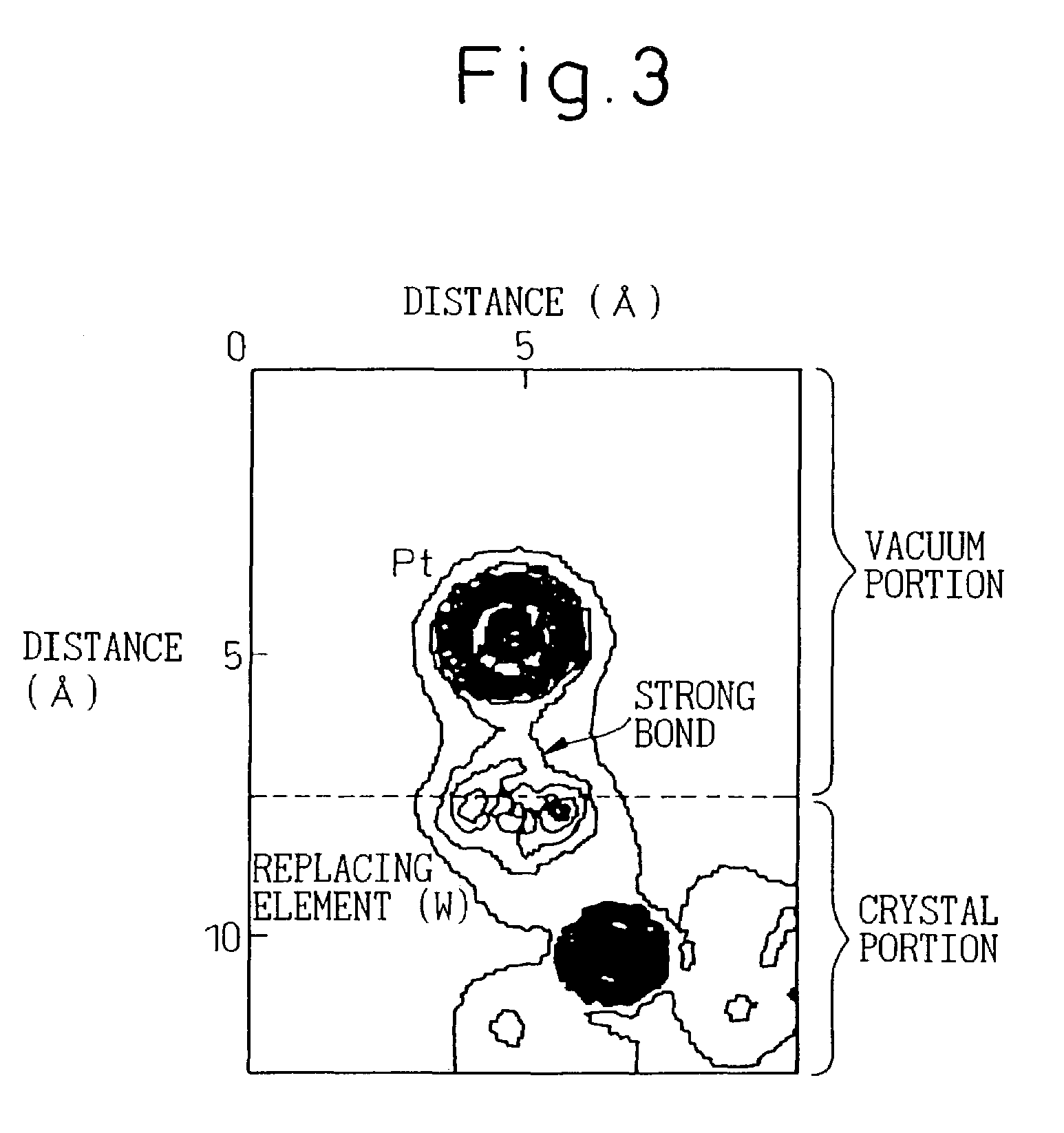Catalyst body
a catalyst and body technology, applied in the field of catalyst bodies, can solve the problems of thermal degradation and difficulty in achieving support strength, and achieve the effects of improving catalyst performance, facilitating degradation, and high support strength
- Summary
- Abstract
- Description
- Claims
- Application Information
AI Technical Summary
Benefits of technology
Problems solved by technology
Method used
Image
Examples
example 1
[0042]Talc, kaolin, alumina and aluminum hydroxide were used as cordierite materials, and 20% of the Al material as the cordierite constituent material was decreased. Next, WO3 corresponding to 10% of Al as the constituent element and TiO2 similarly corresponding to 10% of Al element were added in such a fashion that the resulting composition was approximate to a theoretical composition point of cordierite. After suitable amounts of a binder, a lubricant, a humectant and moisture were added to the starting materials, the mixture was kneaded and converted to clay. The resulting clay was shaped into a honeycomb shape having a cell wall thickness of 100 μm, a cell density of 400 cpsi and a diameter of 50 mm. After being dried, the honeycomb structure was sintered at 1,390° C. for 2 hours in an atmosphere to obtain a ceramic support into which W and Ti were introduced as the replacing elements. Here, two kinds of elements (w and Ti) were used as the replacing elements lest the lattice d...
examples 2 to 9
[0055]A ceramic catalyst body was produced in the same way as in Example 1 with the exception that the elements that were to replace Al as an element constituting cordierite were W and Co, and their oxides WO3 and CoO were added to the cordierite starting materials. Similarly, ceramic catalyst bodies were produced by setting the replacing element to W, Ti or Zr and adding the respective oxide WO31 TiO2 or ZrO2 to the cordierite starting materials (Examples 3 to 5). Since the replacing element is one kind (W) in Example 3, the lattice defect simultaneously occurred, and the replacing element (W) and the lattice defect supported the catalyst element (Pt). Examples 4 and 5 selected the replacing element that did not create (or hardly created) the lattice defect.
[0056]In Examples 6 to 9, the ceramic catalyst bodies were produced in which the support substrate was changed to alumina, tungsten oxide or titania as tabulated in Table 1 and the inter-support element for supporting the cataly...
PUM
| Property | Measurement | Unit |
|---|---|---|
| width | aaaaa | aaaaa |
| diameter | aaaaa | aaaaa |
| width | aaaaa | aaaaa |
Abstract
Description
Claims
Application Information
 Login to View More
Login to View More - R&D
- Intellectual Property
- Life Sciences
- Materials
- Tech Scout
- Unparalleled Data Quality
- Higher Quality Content
- 60% Fewer Hallucinations
Browse by: Latest US Patents, China's latest patents, Technical Efficacy Thesaurus, Application Domain, Technology Topic, Popular Technical Reports.
© 2025 PatSnap. All rights reserved.Legal|Privacy policy|Modern Slavery Act Transparency Statement|Sitemap|About US| Contact US: help@patsnap.com



